Current Offerings
Some information on the treatment options currently provided.
MASSAGE
NEW SERVICE: Traditional Chinese Medicine (TCM)
NEW SERVICE: ACUPUNCTURE
SWEDISH & DEEP TISSUE MASSAGE
While there are some similarities between Swedish Massage and Deep Tissue, they differ in pressure, techniques, intended use, and areas of focus.
Swedish Massage
Swedish massage is gentler than deep tissue massage and better suited for people interested in relaxation and tension relief.
Deep Tissue Massage
Deep Tissue Massage uses many of the same stroking and kneading movements as Swedish massage, but there’s far more pressure.
In order to reach the deep muscle layers, a therapist will employ special techniques with fingertips, knuckles, palms, fists, forearms, and maybe elbows to reach and stretch that deep tissue.
Myofascial (my-o-FASH-e-ul) release is a manual therapy technique often used in massage. This technique focuses on pain believed to arise from myofascial tissues - the tough membranes that wrap, connect and support your muscles, organs, blood, and lymphatic vessels.
Myofascial pain differs from other types of pain because it originates in trigger points which we often referred to as "knots". When fascial restrictions prevent deep tissue massage from working, cupping is an effective way to address imbalances in the body.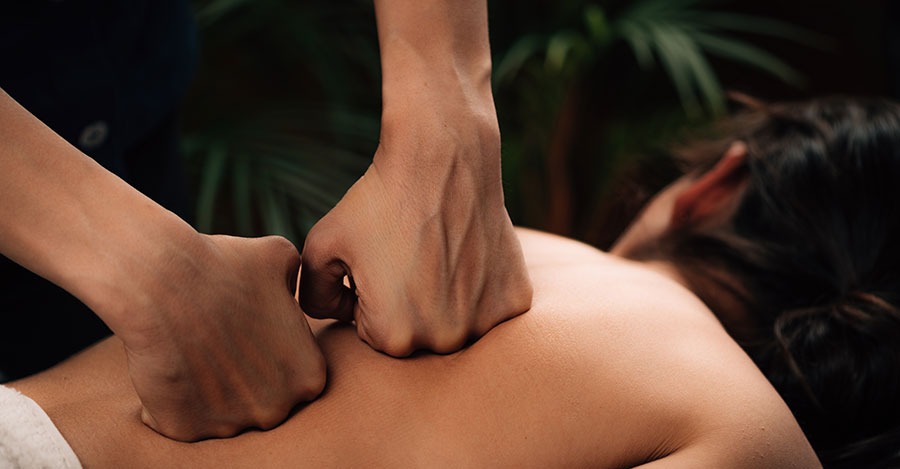
GUA SHA
Gua Sha is an ancient Asian healing method in which a smooth-edged tool is used to stroke the skin with some pressure. “Gua” meaning to scape or rub the skin a number of times; “Sha” being a reddish, raised rash known as petechiae (puh-TEE-kee-uh).
Gradually, adding more pressure to the strokes as you are comfortable with, intentionally raising Sha. You may have some discolouration of your skin, typically lasting 2-4 days. If there is no blood stasis, the petechiae will not be visible and the skin will only turn pink. You could also be sore and tender for a short while after your treatment.
Gua Sha is often used when an individual is experiencing musculoskeletal pain. Typically applied to back, neck, shoulders, buttock and limbs. It is also extremely effective in treating the common cold, bronchitis, asthma as well as any chronic disorder involving pain and stagnation of Qi (life energy) or blood stasis.
Typically, Gua Sha is considered safe. However, it is contraindicated if you are on blood thinners, pregnant, have advanced diabetes, severe anemia, leukaemia, or thrombocytopenia.
Patients generally report feeling light, energized and have a increased range of motion .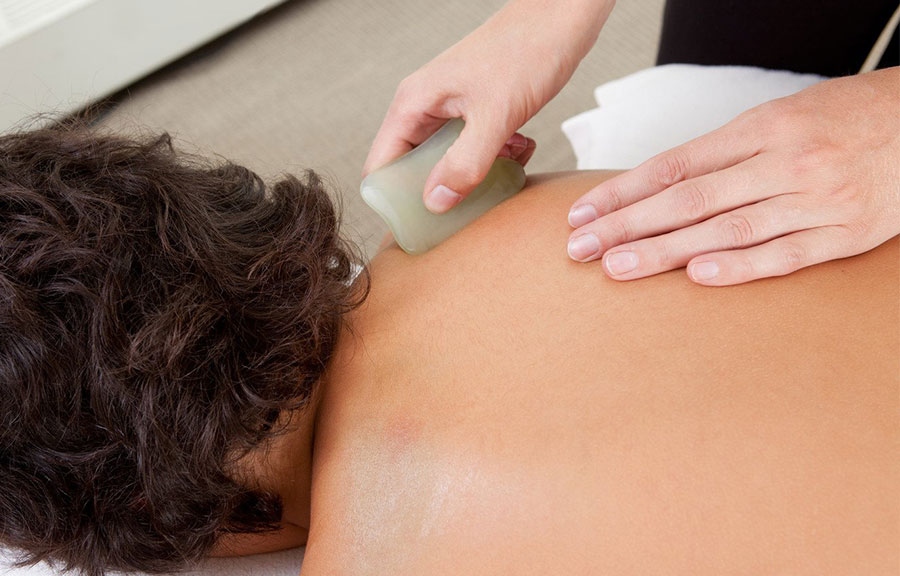
PRE-NATAL AND POST NATAL MASSAGE
Pregnancy massage is performed in a side-lying position supported by many pillows. It is a safe and natural way to reduce stress and discomfort throughout the pregnancy, decreasing swelling, backaches, leg cramps and neck pain.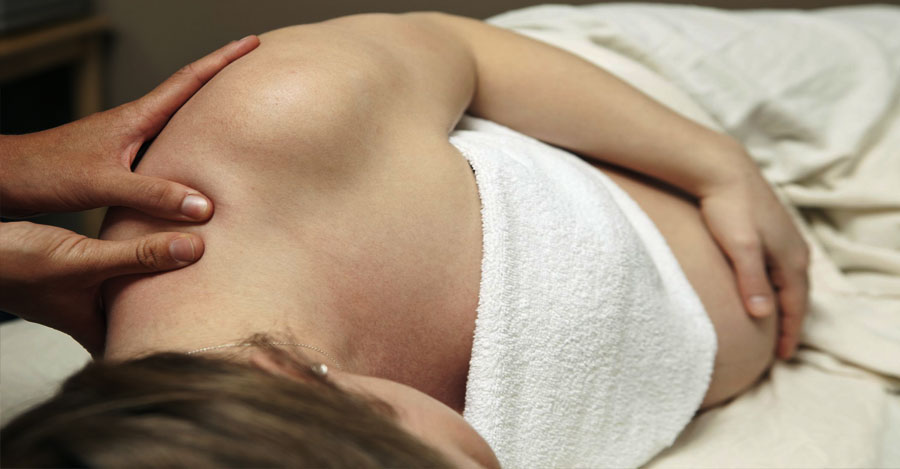
POST PARTUM MASSAGE
Postpartum massage is beneficial in helping relax muscles, increase circulation and lower stress hormones bringing both physical and emotional relief.
DRY CUPPING
Dry cupping is an ancient form of alternative medicine in which cups whether glass, plastic or silicone are attached to the skin by suction, targeting the tissues and muscles below. These cups are kept on from 5 to 15 minutes depending on the severity of the problem and the patients tolerance.
Cupping enhances circulation by drawing fresh, oxygenated blood into the tissues. This process helps to replace cells and stimulate the lymphatic system in eliminating toxins and aiding in the healing process. In addition to releasing tension and fascial restrictions, it increases range of motion and helps to relieve pain.
Cupping is also beneficial in the treatment of :
- Chronic neck and back pain
- Carpal tunnel syndrome
- Tendinitis
- Relief from respiratory issues
- Detoxification
- Gastrointestinal disorders
Discolouration from cupping is common, ranging from very minimal to the appearance of a bruise. Generally lasting a few days to a week. The more fascial restrictions the darker the colour. Some may or may not have discolouration after cupping.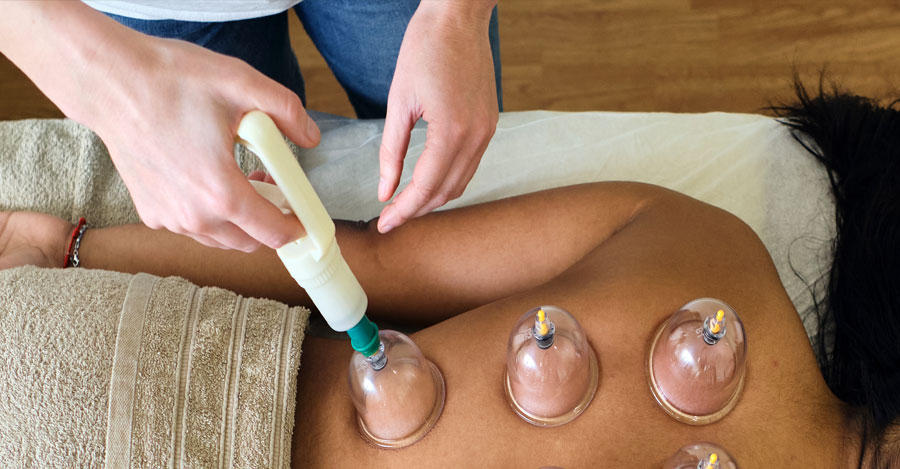
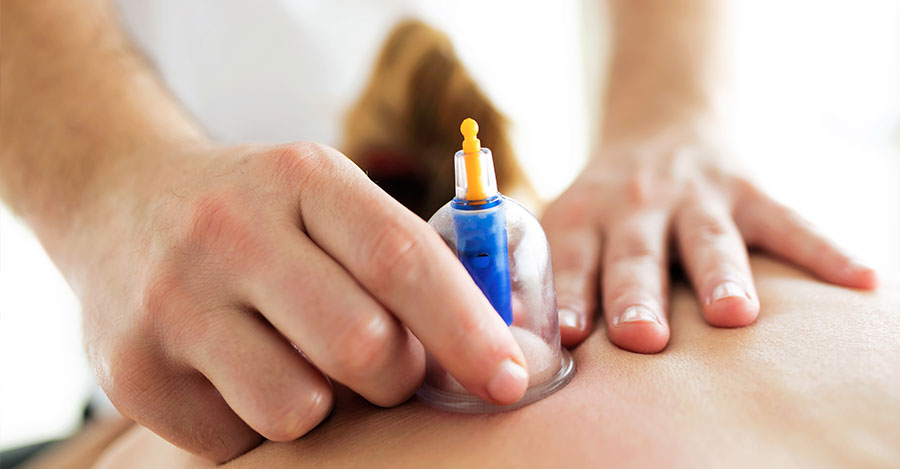
Traditional Chinese Medicine (TCM)
Traditional Chinese Medicine (TCM) is an ancient healing system that has been practiced for over 2,000 years. This holistic approach to health focuses on achieving balance within the body and between the body and its environment.
The TCM Approach
TCM is based on the concept of Qi, a vital life force that flows through the body. Practitioners believe that imbalances in Qi can lead to illness and disease. The goal of TCM is to restore balance and promote overall well-being by addressing the root cause of health issues rather than just treating symptoms.

KEY MODALITIES IN TCM
TCM employs various treatment modalities to restore balance and promote healing:
- Acupuncture: This involves inserting thin needles into specific points on the body to stimulate Qi flow.
- Herbal Medicine: Customized herbal formulas are prescribed to address individual health concerns.
- Fire Cupping: Using warmed glass jars to create suction on the skin, promoting blood flow.
- Tuina Massage: A form of bodywork that combines massage, acupressure, and manipulation techniques.
- Exercise and Diet: for fitness and Nutritional advice based on TCM principles to support overall health.
Benefits of TCM
Research and clinical experience have shown that TCM can offer various health benefits: Reduced inflammation, chronic pain, headaches, restore Hormonal balance, improve reproductive health, Enhanced liver function, overall detoxification, reduce Stress reduction, improve sleep quality, and Strengthen the immune system.
TCM is often used as a complementary therapy alongside conventional medical treatments. While TCM has its roots in ancient practices, it continues to evolve and integrate with modern healthcare. This integration allows for a more comprehensive approach to patient care, combining the strengths of both traditional and conventional medicine.
As a result, Traditional Chinese Medicine offers a unique perspective on health and healing, emphasizing the body's innate ability to restore balance. As research continues to validate many TCM practices, more people are turning to this ancient system as a complementary approach to their healthcare needs.
Uncover the Time-Tested Wisdom of Traditional Chinese Medicine)
Traditional Chinese Medicine (TCM) is an ancient healing system that has been practiced for over 2,000 years. It is a comprehensive approach to health focusing on restoring balance within your body and harmonizing you with your environment. By addressing the root cause of health issues, TCM doesn't just treat symptoms – it promotes overall wellness.
Our TCM treatments include:
- Acupuncture: Stimulation to enhance your body's natural healing abilities
- Personalized herbal formulas: Tailored to your specific health needs
- Fire Cupping Therapy: Improve circulation and relieve muscle tension
- Tuina massage: A rejuvenating blend of massage and acupressure techniques
- Lifestyle guidance: Customized exercise and dietary advice for optimal health
Research and clinical experience have shown that TCM can offer various health benefits including:
- Reduced inflammation and chronic pain
- Improved hormonal balance and reproductive health
- Enhanced liver function and natural detoxification
- Better sleep and stress management
- Strengthened immune system
While TCM has its roots in ancient practices, it continues to evolve and integrate with modern healthcare. This integration allows for a more comprehensive approach to patient care, combining the strengths of both traditional and conventional medicine.
As a result, Traditional Chinese Medicine offers a unique perspective on health and healing, emphasizing the body's innate ability to restore balance. As research continues to validate many TCM practices, more people are turning to this ancient system as a complementary approach to their healthcare needs.
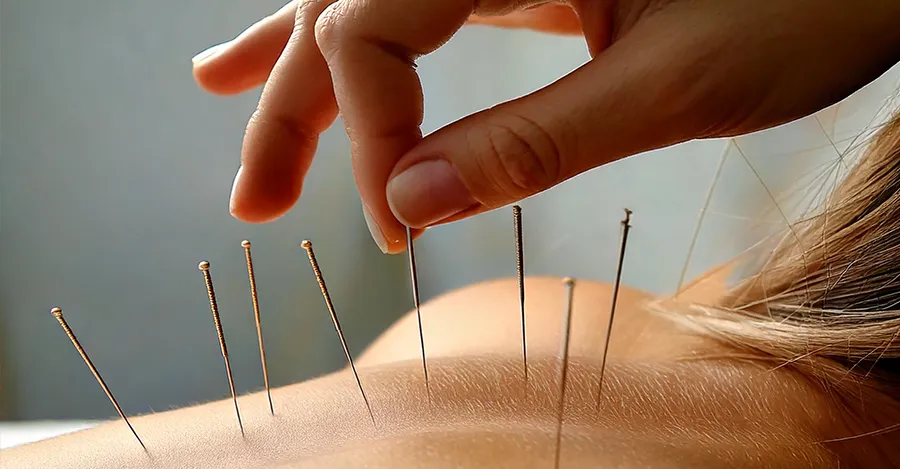
Do you live in the GTA?
Ready to book your Massage, TCM or Acupuncture?
It's quick and easy, just click the button below and follow the instructions. You will receive confirmation and all the patient intake forms via email. Kindly read, complete and sign intake and consent forms, including cancellation policy. I believe everyone's time is valuable, and as a courtesy to everyone, we thank you for being on time. Late arrivals can only be extended to the time remaining in the scheduled session. If you cancel with less than 24 hours notice, or miss your appointment, you will be charged for the entire amount of your scheduled treatment. Insurance does not reimburse claims for late cancellations or missed appointments.
If you don't see the time you are looking for, please add yourself to the wait list.
If an appointment becomes available, you will be given priority.